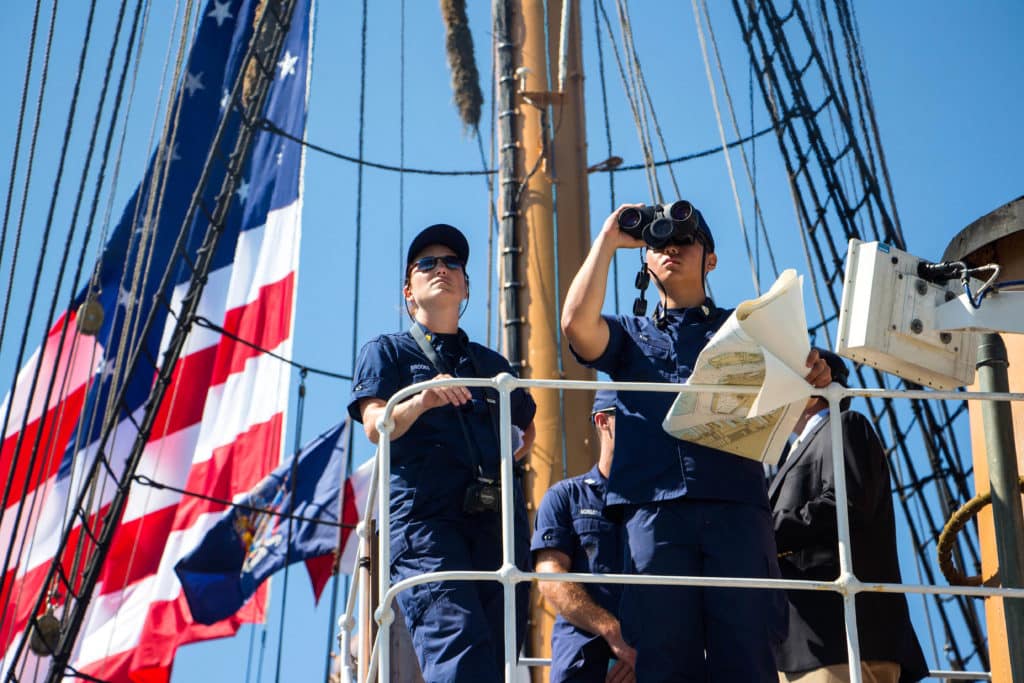
USCG Cutter Eagle in New York Harbor
I once sailed with a quartermaster who had two uncanny talents that were perfect for his particular line of work: spotting things in the water and judging their distance. Both are quite useful skills on the bridge of a Coast Guard patrol boat, and to date I’ve never met or heard of anyone better at those two things than Will Absher. Will’s ability to see things on a vast expanse of blue was impressive enough, but what was remarkable was his ability to tell you exactly how far away something was just by looking at it.
One morning, Will called down to the Master Chief, “Two miles to Whiskey,” and then, “Right ten, Mario.” As skipper of our patrol boat, the Master Chief had to be on the bridge when we passed the sea buoy, and we needed to come right to set up for the turn into the channel. Glancing over at the RADAR I saw a green dot – our buoy – resting perfectly on the two-mile range ring. Will hadn’t taken his eyes off the horizon.
“How do you do that, Will?”
“Do what?”
“The two-miles-thing without looking.”
He leaned back to check the screen as I pointed to the green dot inside the 2-mile range ring. “Oh, that. Math.”
What Will knew that I didn’t was some very basic geometry. At a given height, the distance to the visible horizon is a known quantity. If you know how high your eyes are above the water, the distance to the horizon is just math.
“Distance equals 1.17 times the square root of the height of your eye,” Will said. “I know that here on the bridge my eye is 21 feet from water. So it’s just math. The horizon is about 5.5 nautical miles when looking at it from here. When something seems to be half way to the horizon, it’s between 2.5 and 3 miles, and… well you get it.”
Now, before you serious navigational geeks start throwing yellow flags on the field, I know that refraction—the bending of light—can affect what we see out on the water. But in general, the basics still apply.
How high is your eye when standing on your boat? That suddenly seems like a question you should know the answer to, doesn’t it? If you should find yourself in the unfortunate position of floating around IN the ocean, your eye is going to be about six inches from the surface. Do the math. The horizon from in the water is approximately .8 nautical miles or 1,600 meters. So, thinking about my last post, this skill is vital when deciding to swim for it or not.
If you can see the sand on the beach, you know you have less than 1600 meters in front of you. If you can only see treetops or the tops of buildings, you have a much longer swim and might consider staying put.
Stay safe out there and break out your tape measures. Get the distance to the deck, add your height from your feet to your eyes, and do the math. Will Absher knew the distance to the horizon from every spot on our cutter, from the bridge to the fantail. Vital knowledge for anyone at sea, don’t you think?
Read more safety tips here.








